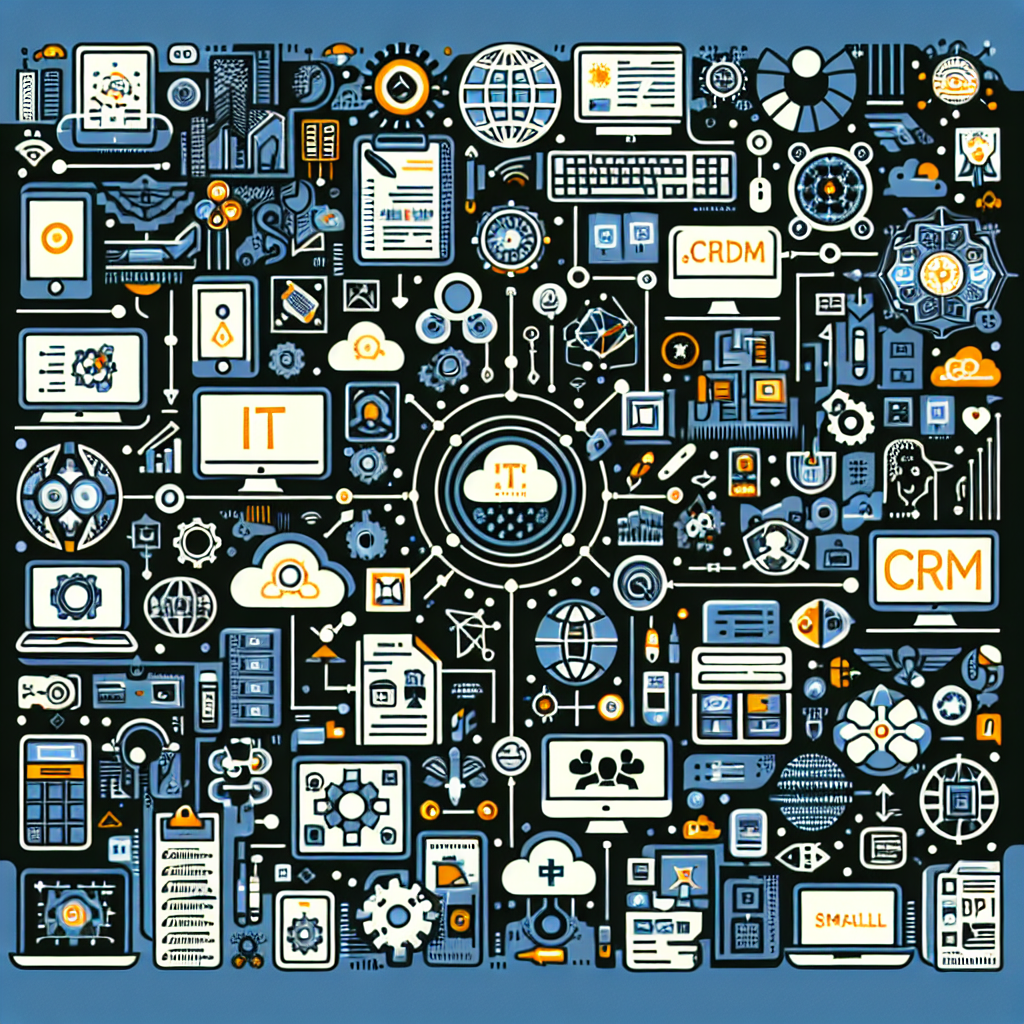Your cart is currently empty!
Tag: Essential

Why Service Level Agreements are Essential for Vendor Management
Service Level Agreements (SLAs) are essential for effective vendor management. An SLA is a contract between a service provider and a customer that outlines the level of service that will be provided. It sets expectations for both parties and helps to ensure that the vendor meets the needs of the customer.One of the main reasons why SLAs are essential for vendor management is that they provide a clear understanding of the services that will be provided. By outlining the specific services that will be delivered, as well as the expected level of performance, SLAs help to avoid misunderstandings and ensure that both parties are on the same page.
SLAs also help to hold vendors accountable for their performance. By setting specific metrics and targets for service delivery, SLAs provide a way to measure a vendor’s performance and ensure that they are meeting the agreed-upon standards. If a vendor fails to meet the requirements outlined in the SLA, the customer can hold them accountable and take appropriate action.
In addition, SLAs help to manage risk in vendor relationships. By clearly defining expectations and responsibilities, SLAs help to reduce the likelihood of disputes and misunderstandings. If issues do arise, the SLA provides a framework for resolving them in a timely and efficient manner.
Furthermore, SLAs help to improve communication between the customer and the vendor. By setting out the terms of the agreement in writing, SLAs provide a reference point for both parties to refer back to and ensure that everyone is on the same page. This can help to avoid misunderstandings and ensure that the vendor is meeting the needs of the customer.
Overall, Service Level Agreements are essential for effective vendor management. They help to clarify expectations, hold vendors accountable, manage risk, and improve communication between the customer and the vendor. By implementing SLAs, organizations can ensure that they are getting the level of service they require from their vendors and build strong, mutually beneficial relationships.
The Cost of Inaction: Why Investing in Disaster Recovery is Essential
As natural disasters become more frequent and severe, the cost of inaction when it comes to investing in disaster recovery is becoming increasingly evident. While the immediate costs of responding to and recovering from disasters are significant, the long-term costs of inaction can be even more damaging.One of the main reasons why investing in disaster recovery is essential is that it can save lives. When communities are prepared for disasters and have the resources in place to respond quickly and effectively, the likelihood of casualties and injuries is greatly reduced. In contrast, when communities are unprepared and lack the necessary resources, the consequences can be devastating.
In addition to saving lives, investing in disaster recovery can also save money in the long run. The costs of responding to and recovering from disasters can be significant, and these costs only increase when communities are unprepared. By investing in disaster recovery, communities can reduce the financial burden of disasters and minimize the economic impact on businesses and individuals.
Furthermore, investing in disaster recovery can help to protect critical infrastructure and assets. When disasters strike, essential services such as water, electricity, and transportation can be disrupted, leading to further damage and disruption. By investing in disaster recovery, communities can strengthen their infrastructure and ensure that these critical services remain operational during and after disasters.
Another important reason to invest in disaster recovery is to build resilience and adaptability in the face of future disasters. Climate change is causing more extreme weather events, such as hurricanes, wildfires, and floods, and communities need to be prepared for these challenges. By investing in disaster recovery, communities can build resilience and adaptability to withstand and recover from future disasters.
Overall, the cost of inaction when it comes to investing in disaster recovery is simply too high. By investing in disaster recovery, communities can save lives, save money, protect critical infrastructure, and build resilience in the face of future disasters. It is essential that communities prioritize disaster recovery and take proactive steps to prepare for and respond to disasters effectively.

Avoiding Disaster: The Essential Steps for Data Backup and Recovery
In today’s digital age, data is the lifeblood of most businesses. Whether it’s customer information, financial records, or important documents, losing this data can be catastrophic for any organization. That’s why having a solid data backup and recovery plan in place is crucial to avoid disaster.Data backup involves making copies of your important files and storing them in a safe location. This ensures that if something happens to your original data – whether it’s due to a hardware failure, cyber attack, or natural disaster – you have a backup that you can easily restore from.
Here are some essential steps for data backup and recovery to help you avoid disaster:
1. Assess your data: Start by identifying the data that is critical to your business operations. This could include customer information, financial records, employee files, and any other important documents. Make a list of these files and prioritize them based on their importance.
2. Choose the right backup solution: There are several options for backing up your data, including external hard drives, cloud storage, and backup software. Consider your budget, the amount of data you need to backup, and how quickly you need to recover your data when choosing a backup solution.
3. Set up automated backups: Manually backing up your data is time-consuming and prone to human error. Instead, set up automated backups to ensure that your data is continuously backed up without any intervention. This will help you stay up-to-date with your backups and minimize the risk of data loss.
4. Test your backups regularly: Simply having a backup in place is not enough – you also need to regularly test it to ensure that it’s working properly. Try restoring some files from your backup to make sure that everything is in order. This will help you identify any issues with your backup solution and address them before they become a problem.
5. Implement a disaster recovery plan: In addition to backing up your data, you should also have a disaster recovery plan in place. This plan should outline the steps you need to take to recover your data in the event of a disaster, such as a cyber attack or natural disaster. Make sure that all employees are aware of this plan and know their roles in the event of a data loss.
By following these essential steps for data backup and recovery, you can avoid disaster and ensure that your business can continue to operate smoothly even in the face of unexpected events. Remember, it’s not a matter of if a disaster will strike, but when – so be prepared and protect your data at all costs.

Why Proactive Maintenance is Essential for Preventing Costly Downtime
Proactive maintenance is an essential practice for businesses looking to prevent costly downtime and maintain the efficiency of their operations. By implementing a proactive maintenance strategy, businesses can identify and address potential issues before they escalate into major problems that result in downtime and expensive repairs.One of the key benefits of proactive maintenance is that it helps businesses avoid unexpected breakdowns and disruptions to their operations. By regularly inspecting and maintaining equipment, businesses can identify and address any issues before they cause a breakdown. This not only helps to prevent costly downtime, but also ensures that equipment is operating at optimal levels, resulting in increased efficiency and productivity.
Additionally, proactive maintenance can help businesses extend the lifespan of their equipment. By regularly servicing and maintaining equipment, businesses can prevent wear and tear, prolonging the lifespan of their assets and avoiding the need for costly replacements. This can result in significant cost savings in the long run, as businesses can avoid the expenses associated with purchasing new equipment.
Furthermore, proactive maintenance can help businesses identify and address potential safety hazards before they pose a risk to employees or the environment. By regularly inspecting equipment and ensuring that it is in good working condition, businesses can create a safer work environment and reduce the likelihood of accidents or injuries.
In conclusion, proactive maintenance is essential for businesses looking to prevent costly downtime and maintain the efficiency of their operations. By implementing a proactive maintenance strategy, businesses can avoid unexpected breakdowns, extend the lifespan of their equipment, and create a safer work environment for their employees. Ultimately, proactive maintenance is a smart investment that can help businesses save money, increase productivity, and ensure the smooth operation of their operations.

The Essential Guide to Managed Service Providers (MSPs): Everything You Need to Know
Managed Service Providers (MSPs) are becoming increasingly popular among businesses of all sizes. These providers offer a wide range of services that can help businesses streamline their operations, improve their efficiency, and reduce costs. Whether you’re a small business looking for IT support or a large corporation in need of a comprehensive managed services solution, this essential guide will provide you with everything you need to know about MSPs.What is a Managed Service Provider?
A Managed Service Provider is a third-party company that manages and assumes responsibility for providing a defined set of services to its clients. These services can range from basic IT support and network maintenance to more comprehensive solutions like cloud computing, cybersecurity, and data backup and recovery. MSPs typically operate on a subscription-based model, offering businesses a cost-effective way to access the expertise and resources they need to keep their operations running smoothly.
Benefits of Using an MSP
There are several key benefits to using an MSP for your business. One of the main advantages is cost savings. By outsourcing your IT needs to a managed service provider, you can eliminate the need to hire and train in-house IT staff, saving you money on salaries, benefits, and overhead costs. MSPs also offer 24/7 monitoring and support, ensuring that your systems are always up and running, minimizing downtime and maximizing productivity. Additionally, MSPs can provide access to cutting-edge technology and expertise that may be out of reach for many businesses.
How to Choose the Right MSP
When choosing an MSP for your business, it’s important to consider several factors. First, evaluate your business’s specific needs and requirements. Do you need basic IT support, or are you looking for a comprehensive managed services solution? Make sure the MSP you choose offers the services you need and has experience working with businesses in your industry.
Next, consider the MSP’s reputation and track record. Look for providers with a proven track record of delivering high-quality services and reliable support. You may also want to ask for references or case studies from past clients to get a sense of their level of expertise and customer satisfaction.
Finally, consider the MSP’s pricing and contract terms. Make sure you understand the costs involved and what is included in the service agreement. Look for a provider that offers transparent pricing and flexible contract terms that align with your business’s needs and budget.
Conclusion
In conclusion, Managed Service Providers offer businesses a cost-effective and efficient way to access the expertise and resources they need to manage their IT infrastructure. By outsourcing your IT needs to an MSP, you can streamline your operations, improve your efficiency, and reduce costs. When choosing an MSP for your business, be sure to consider your specific needs, the provider’s reputation, and pricing and contract terms. With the right MSP partner, you can focus on growing your business while leaving the technical details to the experts.

The Cost of a Cyberattack: Why Investing in Cybersecurity is Essential
In today’s digital age, cyberattacks have become a serious threat to businesses of all sizes. The cost of a cyberattack can be devastating, both financially and in terms of reputation. This is why investing in cybersecurity is not just important, but essential for the survival of any organization.The financial cost of a cyberattack can be staggering. According to a report by IBM, the average cost of a data breach in 2020 was $3.86 million. This includes costs such as remediation, legal fees, regulatory fines, and loss of revenue. In addition, there are often hidden costs such as damage to brand reputation, customer trust, and employee morale.
Furthermore, the impact of a cyberattack can be long-lasting. A study by the Ponemon Institute found that 60% of small businesses go out of business within six months of a cyberattack. This is due to the high cost of recovery, as well as the loss of customers who no longer trust the organization to protect their data.
Investing in cybersecurity is essential to protect your organization from these risks. By implementing strong security measures, such as firewalls, encryption, and regular security audits, you can reduce the likelihood of a successful cyberattack. In addition, having a robust incident response plan in place can help minimize the damage in the event of a breach.
While the upfront cost of investing in cybersecurity may seem high, the cost of not investing can be even higher. In the long run, the financial and reputational damage caused by a cyberattack can far outweigh the initial investment in security measures.
In conclusion, the cost of a cyberattack is high, both in terms of financial losses and damage to reputation. Investing in cybersecurity is essential for any organization looking to protect itself from these risks. By implementing strong security measures and having a robust incident response plan in place, you can minimize the impact of a cyberattack and ensure the long-term success of your business.

10 Essential Steps for Developing a Strong Business Continuity Plan
Developing a strong business continuity plan is crucial for any organization looking to mitigate risks and ensure the continuity of their operations in the face of unexpected disruptions. From natural disasters to cyber attacks, there are a myriad of potential threats that can impact a business, making it essential to have a comprehensive plan in place. Here are 10 essential steps for developing a strong business continuity plan:1. Identify key business functions and processes: The first step in developing a business continuity plan is to identify the critical functions and processes that are essential for the organization to operate. This includes everything from customer service to IT systems to supply chain management.
2. Conduct a risk assessment: Once you have identified your key business functions, the next step is to conduct a thorough risk assessment to identify potential threats and vulnerabilities that could impact those functions. This can include everything from natural disasters to cyber attacks to supply chain disruptions.
3. Develop a business impact analysis: A business impact analysis helps to quantify the potential impact of a disruption on your organization, including financial losses, operational downtime, and damage to your reputation. This analysis will help you prioritize your response efforts and allocate resources effectively.
4. Establish recovery objectives: Based on the results of your risk assessment and business impact analysis, you should establish clear recovery objectives for each critical function and process. This will help guide your response efforts and ensure that you are able to resume operations as quickly as possible.
5. Develop a response and recovery plan: With your recovery objectives in mind, develop a detailed response and recovery plan that outlines the steps that need to be taken in the event of a disruption. This plan should include everything from communication protocols to resource allocation to alternative work arrangements.
6. Test your plan: Once you have developed your business continuity plan, it is essential to test it regularly to ensure that it is effective and up-to-date. This can include tabletop exercises, simulations, and full-scale drills to identify any gaps or weaknesses in your plan.
7. Train your employees: Your employees are a critical part of your business continuity plan, so it is important to provide them with the training and resources they need to respond effectively in the event of a disruption. This can include training on emergency procedures, communication protocols, and how to access critical systems remotely.
8. Review and update your plan regularly: Business continuity planning is an ongoing process, so it is important to review and update your plan regularly to reflect changes in your organization, technology, and the threat landscape. This will help ensure that your plan remains effective and relevant.
9. Establish a communication plan: Effective communication is essential during a disruption, so it is important to establish a communication plan that outlines how information will be shared both internally and externally. This can include designated communication channels, contact lists, and protocols for updating stakeholders.
10. Engage with stakeholders: Finally, it is important to engage with your stakeholders, including employees, customers, suppliers, and regulators, throughout the business continuity planning process. By involving them in the planning and response efforts, you can build trust and ensure a coordinated response to any disruption.
In conclusion, developing a strong business continuity plan is essential for any organization looking to protect their operations and minimize the impact of unexpected disruptions. By following these 10 essential steps, you can create a comprehensive plan that will help you respond effectively to any threat and ensure the continuity of your business.

Why Proactive Maintenance is Essential for Ensuring Safety in the Workplace
In any workplace, safety should always be a top priority. Ensuring a safe working environment not only protects employees from harm, but also contributes to a more productive and efficient work environment. One key aspect of maintaining workplace safety is through proactive maintenance.Proactive maintenance involves regularly inspecting, repairing, and maintaining equipment, machinery, and facilities before any issues arise. This proactive approach to maintenance helps to prevent accidents, breakdowns, and other safety hazards in the workplace.
One of the main reasons why proactive maintenance is essential for ensuring safety in the workplace is that it helps to identify and address potential safety risks before they become serious problems. By regularly inspecting and maintaining equipment and machinery, employers can identify any issues that could lead to accidents or injuries, and take corrective action to prevent them from occurring.
In addition, proactive maintenance helps to ensure that equipment and machinery are operating at their optimal level of performance. Regular maintenance can help to extend the lifespan of equipment, reduce the risk of breakdowns, and improve overall efficiency. This not only helps to prevent accidents and injuries, but also helps to maintain a safe and productive work environment.
Furthermore, proactive maintenance can also help to ensure compliance with safety regulations and standards. By regularly inspecting and maintaining equipment and facilities, employers can ensure that they are meeting all necessary safety requirements and standards. This can help to prevent costly fines and penalties, as well as protect the well-being of employees.
Overall, proactive maintenance is essential for ensuring safety in the workplace. By taking a proactive approach to maintenance, employers can identify and address potential safety risks, ensure optimal performance of equipment and machinery, and maintain compliance with safety regulations. By prioritizing safety through proactive maintenance, employers can create a safe and productive work environment for all employees.

10 Essential IT Solutions for Small Businesses
In today’s digital age, small businesses rely heavily on technology to operate efficiently and effectively. From managing finances to marketing their products and services, IT solutions play a crucial role in the success of small businesses. Here are 10 essential IT solutions that every small business should consider implementing:1. Cloud Computing: Cloud computing allows small businesses to access and store data securely over the internet. This can help reduce costs associated with physical servers and storage devices, and also allows for remote access to data from anywhere with an internet connection.
2. Cybersecurity: Small businesses are increasingly becoming targets for cyber attacks, making cybersecurity a top priority. Implementing firewalls, antivirus software, and regular security updates can help protect sensitive data and prevent breaches.
3. Data Backup and Recovery: Data loss can be catastrophic for a small business, so having a reliable backup and recovery solution is essential. This can include regular backups to an external server or cloud storage, as well as a plan for recovering data in the event of a disaster.
4. Customer Relationship Management (CRM) software: CRM software helps small businesses manage customer relationships and improve sales and marketing efforts. It can track customer interactions, manage leads, and analyze customer data to improve business processes.
5. Website and E-commerce Solutions: A professional website is essential for small businesses to establish an online presence and attract customers. E-commerce solutions allow businesses to sell products and services online, increasing revenue and reach.
6. VoIP Phone Systems: Voice over Internet Protocol (VoIP) phone systems provide cost-effective communication solutions for small businesses. They offer features such as call forwarding, voicemail to email, and conference calling, making communication more efficient.
7. Project Management Tools: Project management tools help small businesses organize tasks, track progress, and collaborate effectively. They can streamline workflows, improve productivity, and ensure projects are completed on time and within budget.
8. Accounting Software: Managing finances is crucial for the success of small businesses, and accounting software can help simplify the process. It can track expenses, create invoices, and generate financial reports to make informed business decisions.
9. Remote IT Support: Small businesses may not have the resources for an in-house IT department, so having access to remote IT support can be invaluable. This allows businesses to quickly resolve technical issues and ensure their systems are running smoothly.
10. Mobile Device Management: With the rise of mobile devices in the workplace, small businesses need to implement mobile device management solutions to secure company data and control access to sensitive information. This can help protect against security threats and ensure compliance with company policies.
In conclusion, implementing these 10 essential IT solutions can help small businesses streamline operations, improve security, and enhance productivity. By investing in technology that meets their specific needs, small businesses can stay competitive in today’s fast-paced digital world.

Why Remote Monitoring is Essential for Remote Workforces
With the rise of remote workforces in recent years, the need for effective remote monitoring has become increasingly essential. Remote monitoring refers to the process of tracking and analyzing the activities and performance of employees who are working from home or other remote locations. This technology allows employers to ensure that their remote workforce is productive, efficient, and engaged, even when they are not physically present in the office.There are several reasons why remote monitoring is essential for remote workforces. One of the main benefits is the ability to track employee productivity and performance. With remote monitoring tools, employers can see how much time employees are spending on specific tasks, monitor their progress, and identify any potential issues or bottlenecks that may be hindering their productivity. This real-time data allows managers to provide timely feedback and support to help employees stay on track and meet their goals.
Remote monitoring also helps to ensure compliance with company policies and procedures. By tracking employee activities and communications, employers can ensure that remote workers are following security protocols, adhering to company guidelines, and maintaining a high level of professionalism in their remote work environment. This helps to maintain a consistent level of quality and accountability across the entire workforce, regardless of where employees are located.
In addition, remote monitoring can help to improve communication and collaboration among remote team members. By providing insights into each employee’s availability, workload, and progress, remote monitoring tools can help team members coordinate their efforts, share information, and collaborate more effectively. This can lead to increased efficiency, better decision-making, and a stronger sense of teamwork among remote employees.
Furthermore, remote monitoring can help to enhance employee engagement and satisfaction. By providing visibility into their work and progress, remote employees can feel more connected to their team and organization, leading to increased motivation, productivity, and job satisfaction. Remote monitoring tools can also help managers recognize and reward employees for their hard work, which can boost morale and retention rates among remote workers.
Overall, remote monitoring is essential for remote workforces because it provides valuable insights into employee performance, ensures compliance with company policies, improves communication and collaboration, and enhances employee engagement and satisfaction. By investing in remote monitoring technology, employers can effectively manage their remote workforce, drive productivity and efficiency, and achieve their business goals in a remote work environment.
